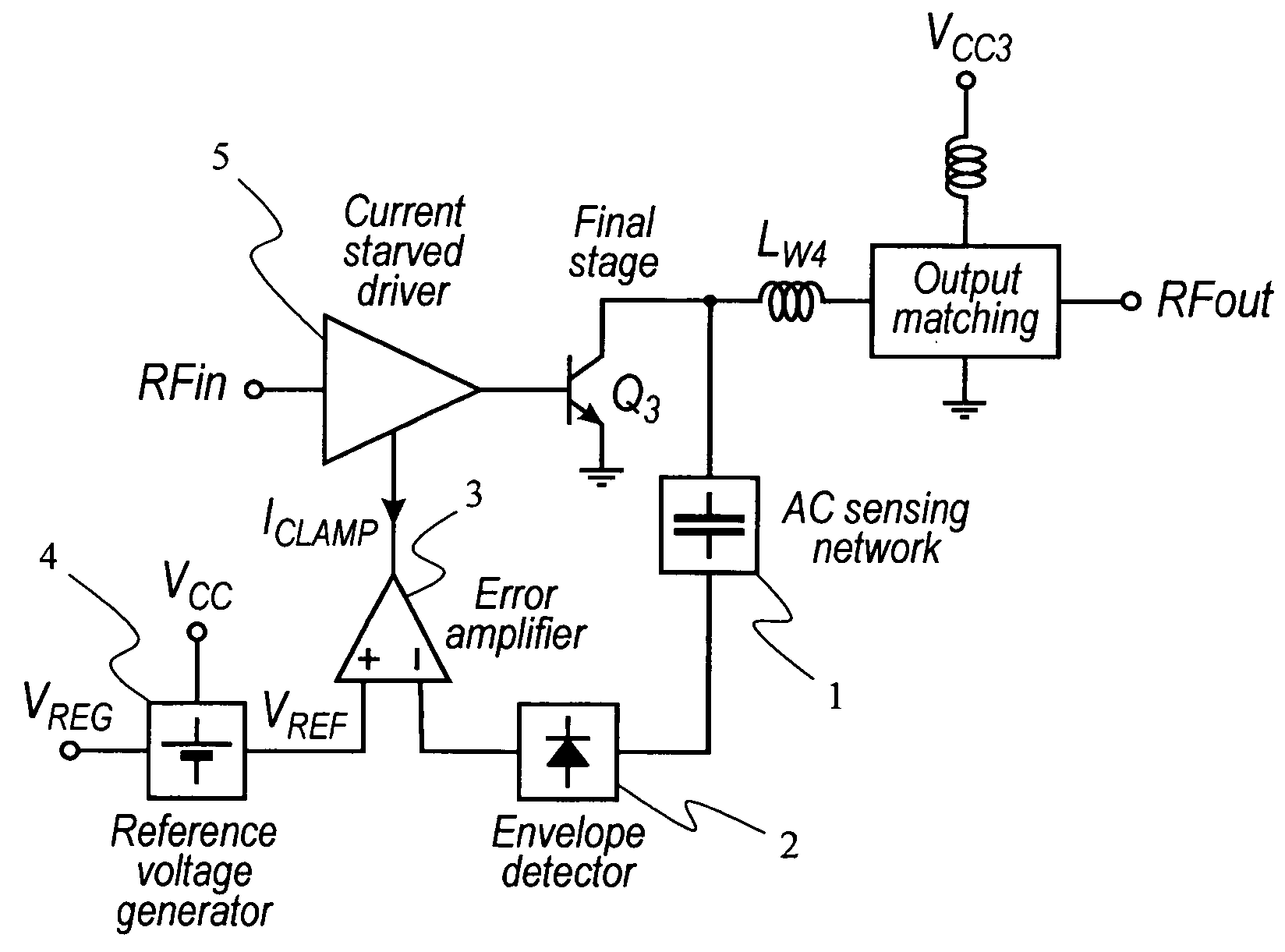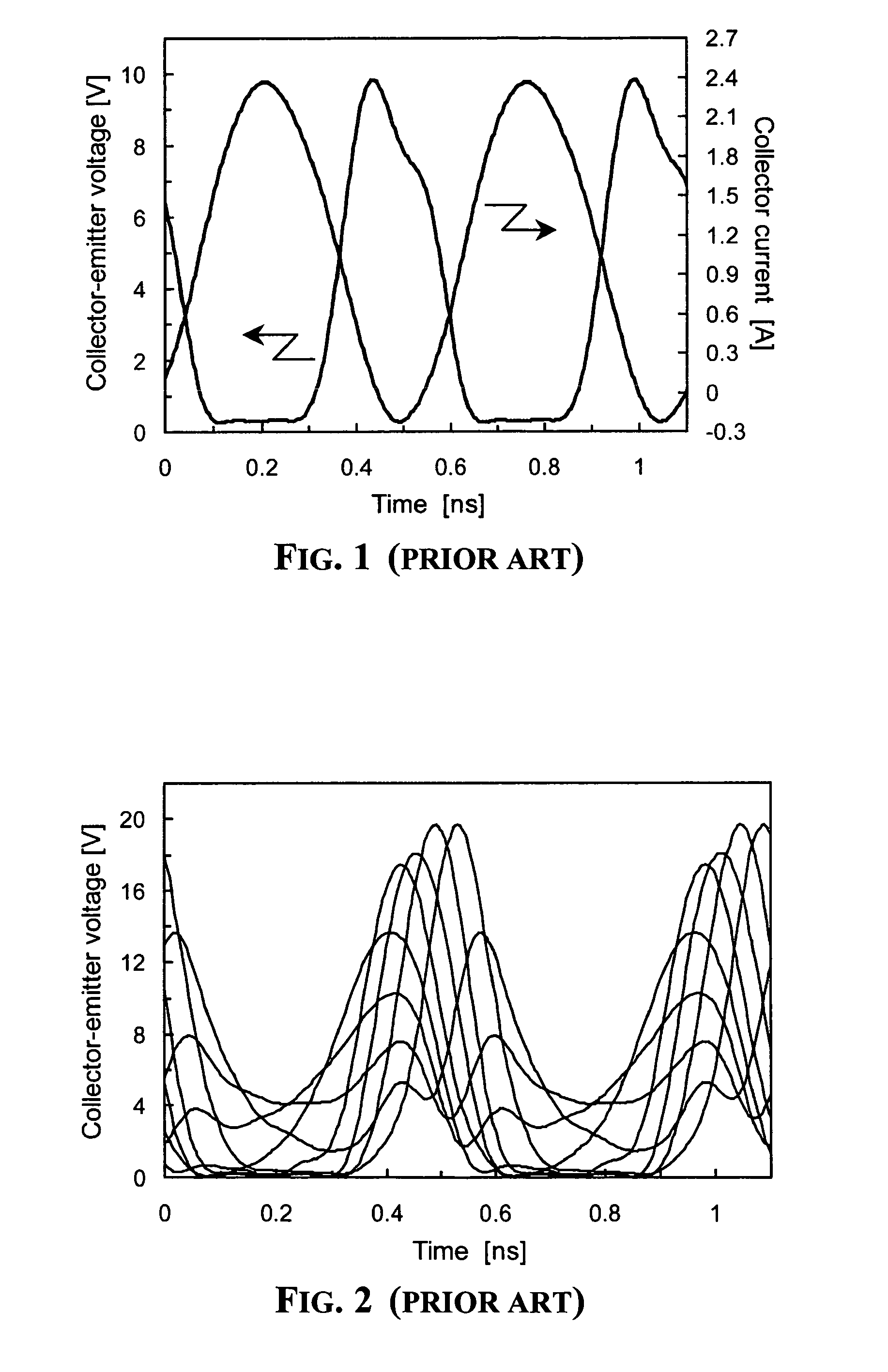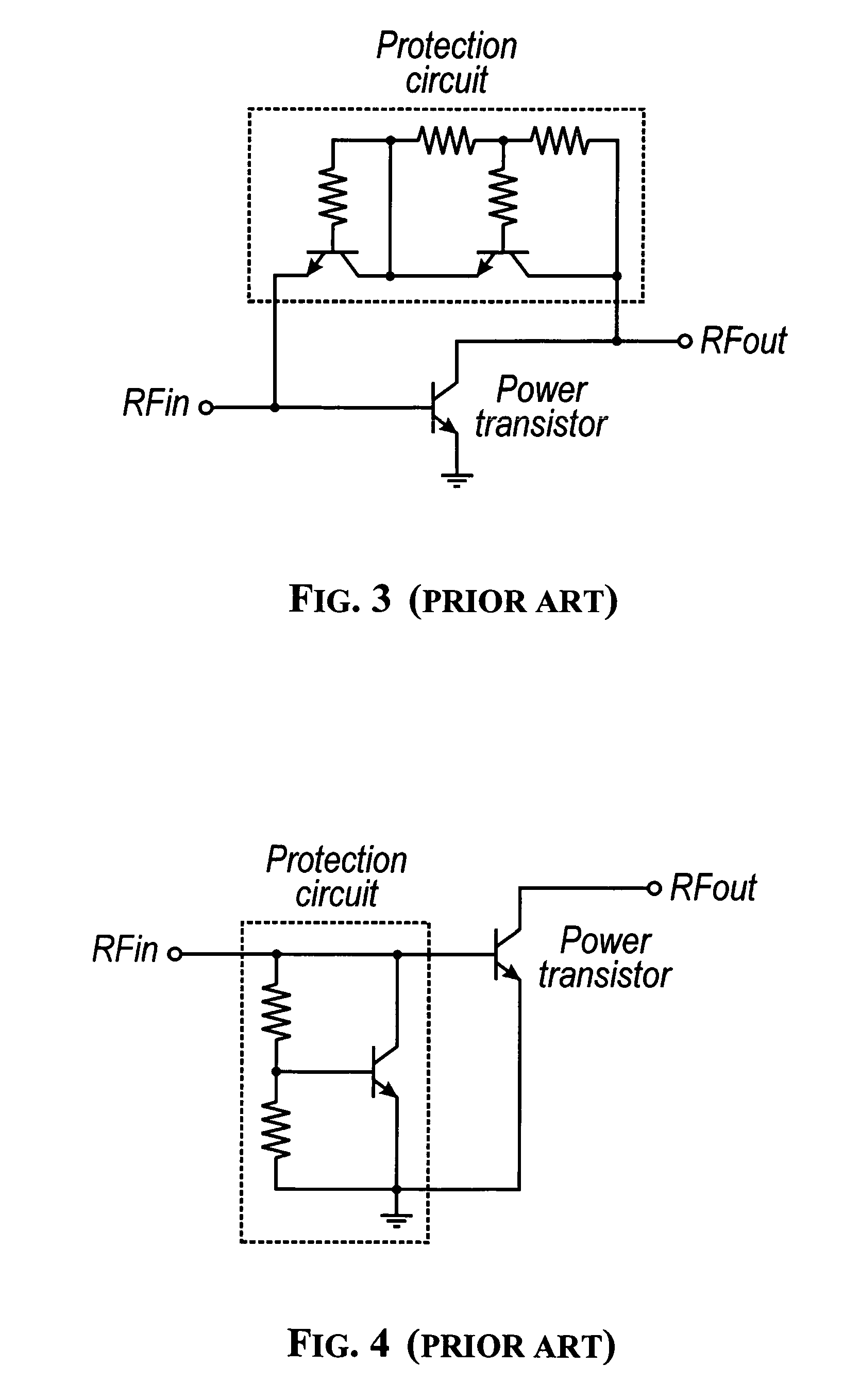Protection of output stage transistor of an RF power amplifier
a technology of output stage transistor and power amplifier, which is applied in the field of electronic devices, can solve the problems of strong current consumption, no voltage regulator is used between the battery cell and the power amplifier, and the designers of the rf transmission circuit are not unusually technical, so as to enhance the reliability of protection
- Summary
- Abstract
- Description
- Claims
- Application Information
AI Technical Summary
Benefits of technology
Problems solved by technology
Method used
Image
Examples
Embodiment Construction
[0036]A simplified diagram of an RF power amplifier (briefly PA) according to a sample embodiment is shown in FIG. 7. The circuit includes three stages (Q1-Q3) Based on load-pull measurements, two elementary power cells were paralleled to implement the first stage, seven cells were used for the-second stage, and twenty-eight cells for the third.
[0037]In GSM and DCS systems, transmitter linearity requirements are a minor issue due to the constant-envelope modulation scheme adopted. Therefore, high-efficiency operation classes, such as disclosed in F. H. Raab, “Class-F power amplifiers with maximally flat waveforms,”IEEE Trans. Microwave Theory Tech., vol. 45, pp. 2007-2012, Nov. 1997, can be exploited for PA design. In the embodiment considered, a series-resonant load was used to improve PA efficiency as disclosed in F. Carrara, T. Biondi, A. Castorina, A. Scuderi, and G. Palmisano, “A 1.8-GHz high-efficiency 34-dBm silicon bipolar power amplifier,”IEEE Trans Microwave. Indeed, bond-...
PUM
 Login to View More
Login to View More Abstract
Description
Claims
Application Information
 Login to View More
Login to View More - R&D
- Intellectual Property
- Life Sciences
- Materials
- Tech Scout
- Unparalleled Data Quality
- Higher Quality Content
- 60% Fewer Hallucinations
Browse by: Latest US Patents, China's latest patents, Technical Efficacy Thesaurus, Application Domain, Technology Topic, Popular Technical Reports.
© 2025 PatSnap. All rights reserved.Legal|Privacy policy|Modern Slavery Act Transparency Statement|Sitemap|About US| Contact US: help@patsnap.com



